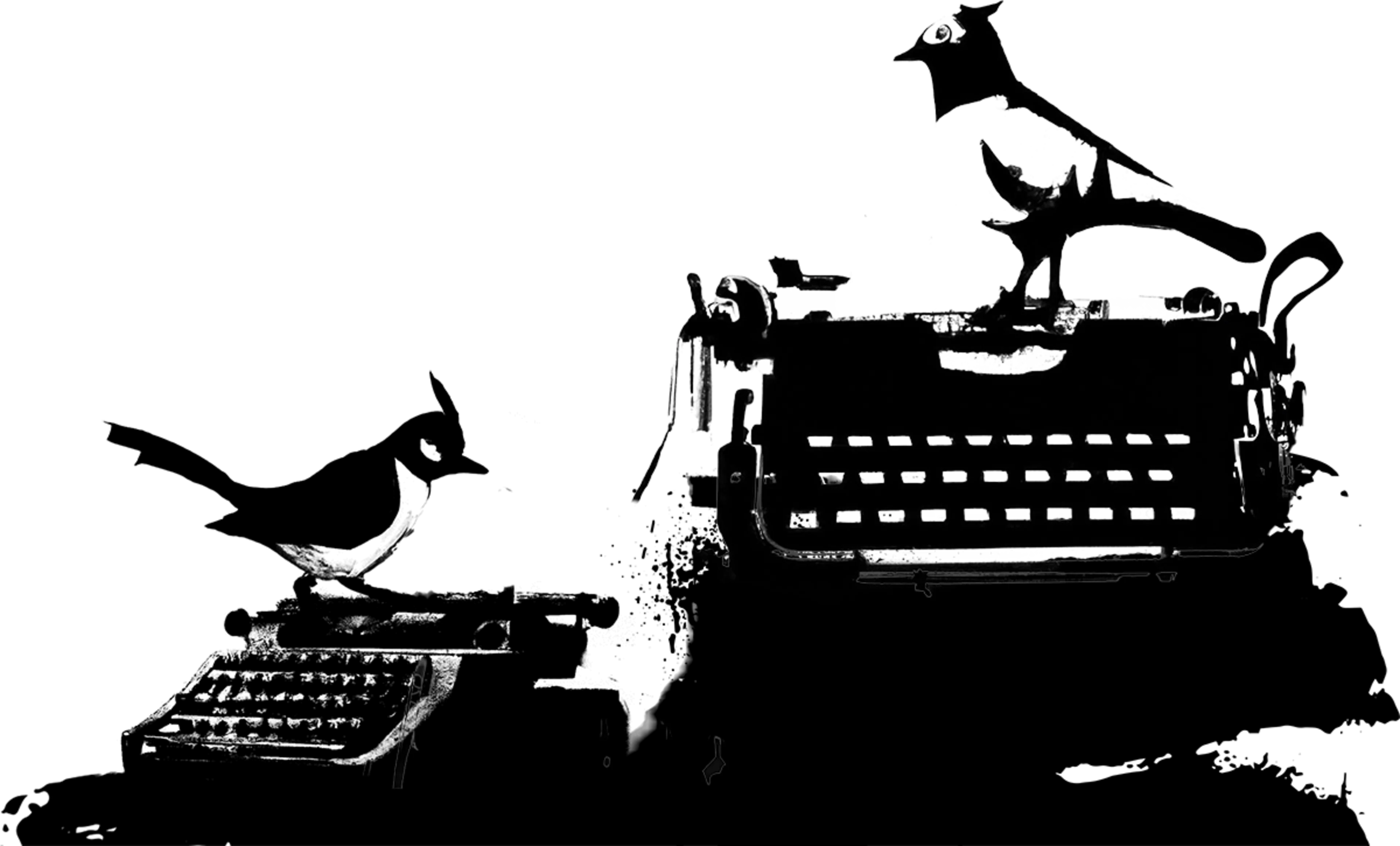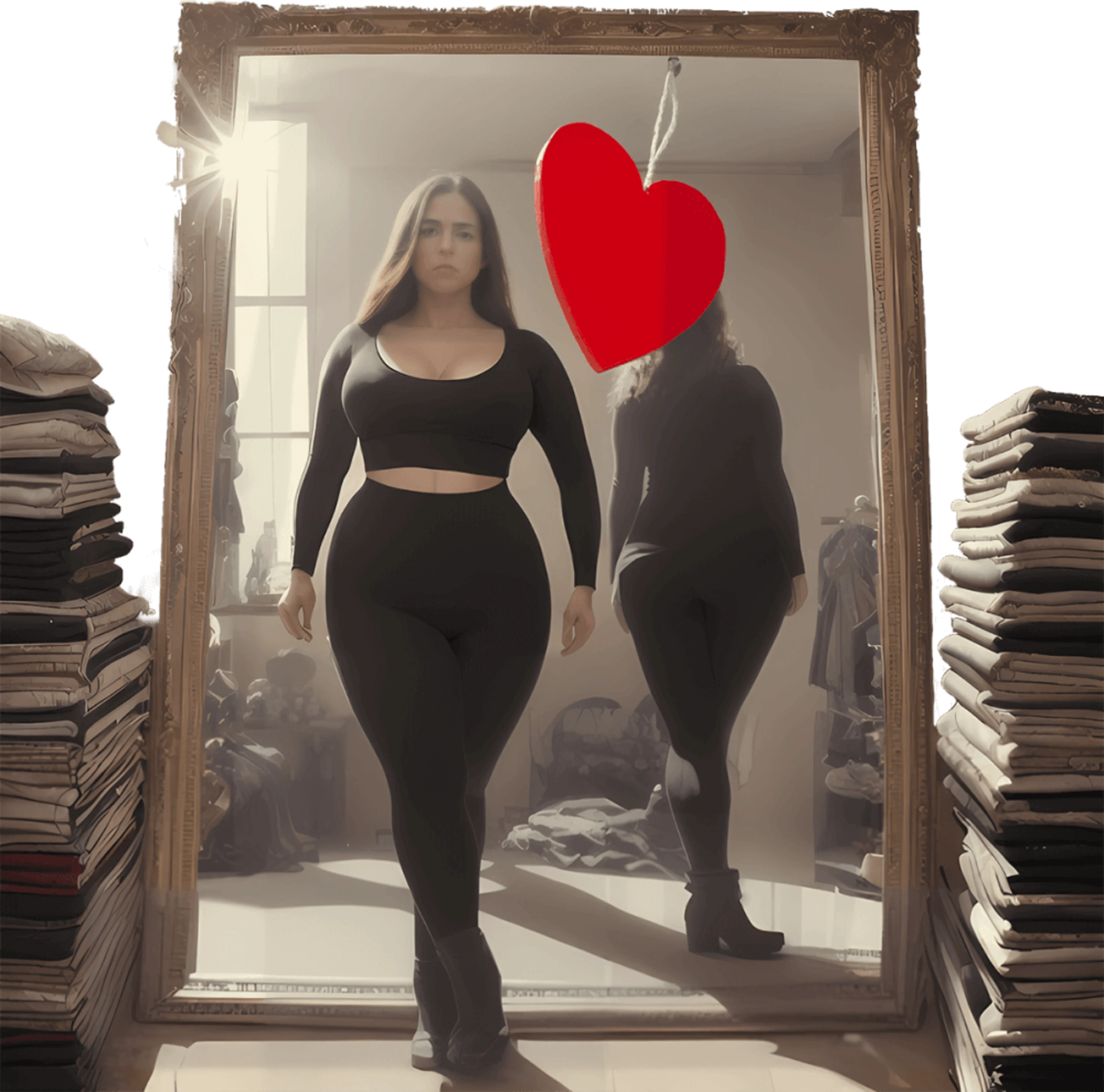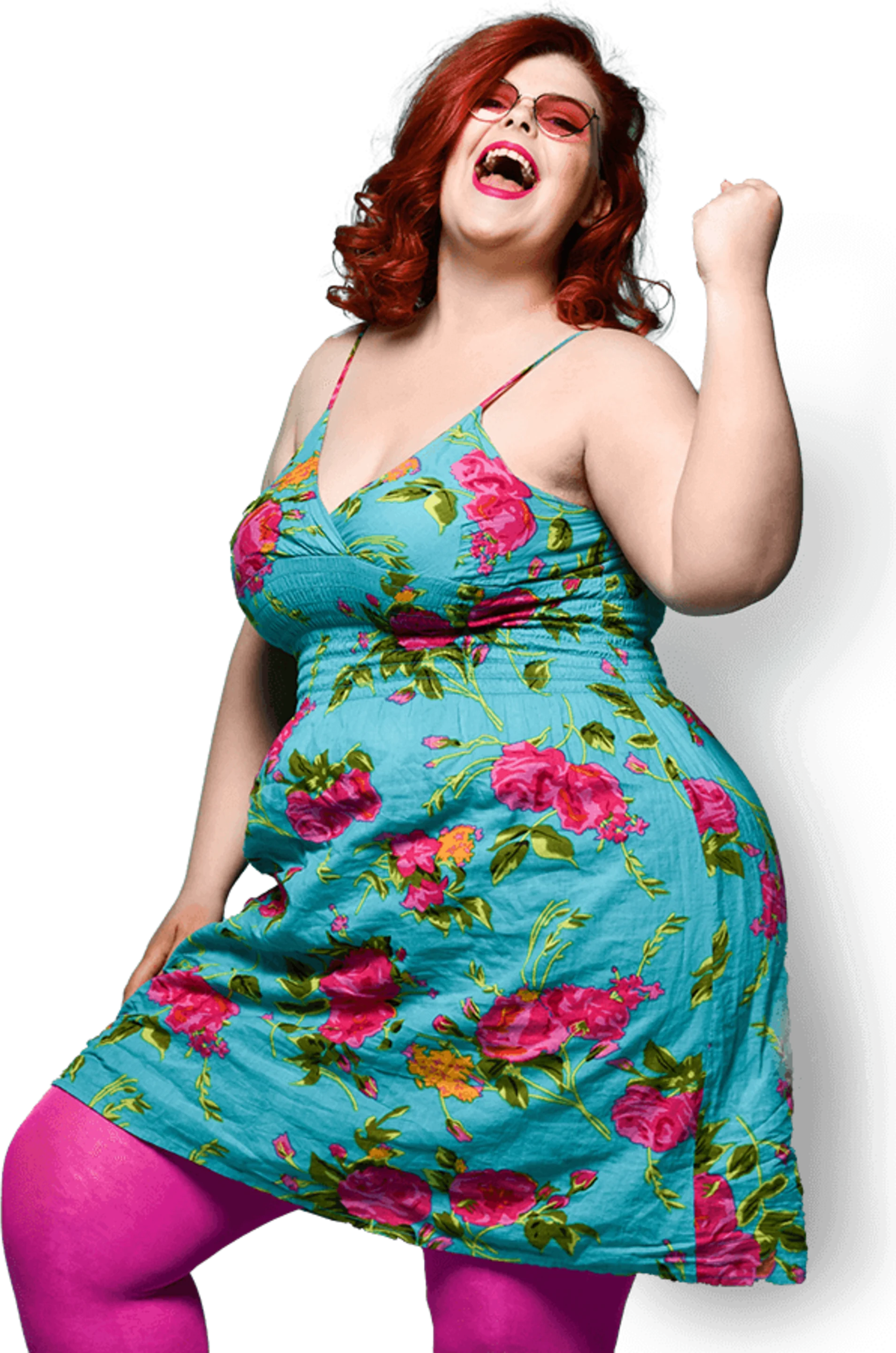There's a 2013 study by Dahl, Hoegg, Morales, and Scott that states that whilst clothing sizes don't truly matter, the foundations of most women's self-esteem can be found in the number on the clothing label. They go on to say that "larger sizes result in negative evaluations of clothing and show that these effects are driven by consumers' self-esteem". Women have it drilled into them from their teenage years that they are expected to stay one size for their entire lives, and then if you do have to change a clothing size, you are meant to go down, not go up. It's a perpetuation of diet culture: society says you are meant to fit into your clothes rather than buying clothes that fit your body.
When you look at this in conjunction with the rise of social media, it's scary. You can watch television programmes like Love Island - shows where everyone's bodies are very much on display and where everyone comes out with fashion brand deals - and everyone fits into a catwalk modelesque body image that can be seen across the media.
In no way is this body type wrong, but it shouldn't be the only correct one to have.
Coming into the summer months, I realised I was in desperate need of a new, smarter pair of shorts, and after much looking, I found some in a high street shop. I ended up taking two sizes to try on in the fitting rooms. The size 14 was too big in the leg and too small in the waist. The size 16 pair was too big all around - I really needed an in-between size. Sighing, I pulled on the shorts I had come in, when the label caught my eye. They were from a different shop - and a size 10.
Unfortunately, my experience is exceptionally common for anyone used to women's clothing sizes. Men's clothing, and indeed unisex clothing, is based on a small, medium, and large system that is far more forgiving and generalised: a large is looser and designed for taller, wider, and broader people. A small is designed to fit closer, too, for those who are slimmer and smaller. It's universal, understood everywhere, and easy to follow.
Women's clothing, on the other hand, is based on a number system that no one truly understands. You can go into a clothing shop and see a list of measurements for each size, and you're expected to know your waist measurement to select the correct size of jeans, irrespective of bloating, what you've had for breakfast, and the time of the month. These measurements vary hugely from shop to shop, so you, like me, can be in size 14 shorts at one and size 10 at another.
I am tall and have an hourglass figure. I've got broad shoulders and wide hips. I'm firmly mid-size, which is very much the norm nowadays, and I am very much alright with it. Yet women's clothing is designed for one body type - the media-perpetuated, catwalk model body that my friends affectionately dubbed 'Barbie' - so if your body is shaped in a way other than this, you are subjecting yourself to ill-fitting clothing in some way or another.
Despite the prevalence of this media-perpetuated image that we are expected to hold ourselves to, and indeed are often taught, even in school, that it is right to aspire to, there are influencers on social media promoting body positivity and neutrality: Jameela Jamil and Megan Jayne Crabbe immediately come to mind. The active promotion of a range of body types, and not only acceptance but the love and appreciation of how everyone's body works and moves, is becoming more and more normalised and accepted. If you accept this way of thinking, the number on the clothing tag is essentially arbitrary, and we might as well use the same small, medium, and large system that men's and unisex clothing use.
Our generation has grown up with social media but is old enough to remember a time before it. The body positivity movement has been spearheaded on platforms such as Instagram and TikTok. I can't help but wish that they had been around when I was tall enough that I needed to wear women's size 6 clothing at age eleven, and both excited, because it was grown up, but also incredibly, awkwardly self-conscious about the fact that there was a now a number on my clothing label - a number that I now realise in no way matters. If women's clothing was sized more liberally and less arbitrarily, like men's and unisex clothing is, perhaps there might not be this issue at all, and not only could we stop subjecting ourselves to trying on ill-fitting clothing, but we could start protecting our self-esteem as well.
Written by
Jess Boot-CowieTheatre and Creative Writing student who is interested in the stage, the cinema, and why people do the things they do.
Read next
Weekly emails
Get more from Jess
The Fledger was born out of a deep-seated belief in the power of young voices. Get relevant views on topics you care about direct to your inbox each week.
Write at The Fledger
Disagree with Jess?
Have an article in mind? The Fledger is open to voices from all backgrounds. Get in touch and give your words flight.
Write the Contrast




